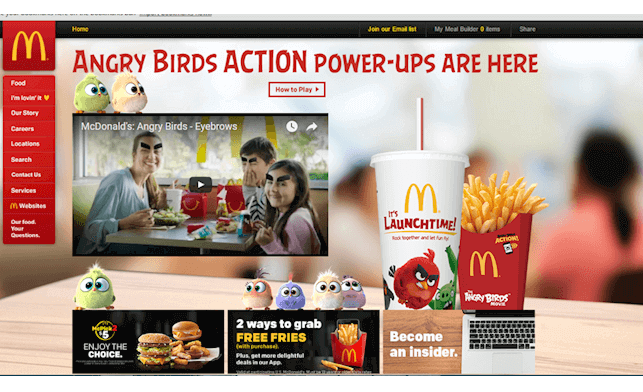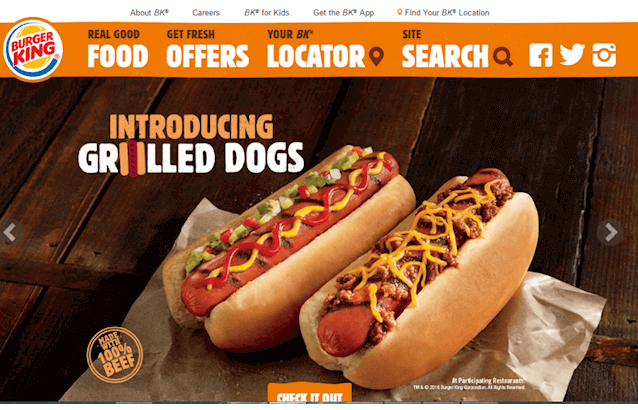It’s easy to neglect brand voice as a fluffy, unimportant aspect of marketing—until someone messes it up. Or doesn’t do it. When you think about Dos Equis, what comes to mind? Or Apple? Or Mailchimp? You laugh or feel reassured or think about a mascot. But more importantly, the brand voice connects with the company’s value proposition in each of these examples. The Most Interesting Man in the World connects to a good, relaxing time drinking a beer. Apple’s idiosyncratic philosophy applies to the hardware you buy that helps your creativity and productivity. Mailchimp’s cheery, non-technical ease of using email software makes it attractive for users.
So what happens when you lack voice? We’ll first pick on some big, obvious targets to clearly illustrate the power of voice—and the lack of power without it.
McDonalds vs. Burger King
Let’s look at two well-known fast food companies: McDonald’s and Burger King. The McDonalds website, best represented by the homepage, is a jumble of mixed messages. The homepage is kid-dominated, meaning this content will lack relevancy for adults who may mostly look for deals and information. Plus, other vague messages (“become an insider” or “enjoy the choice”) pop in and out, potentially confusing visitors.

Burger King, by contrast, offers a consistent voice that seems to target adults looking for deals. It sounds like plain, everyday language that can range across a wide demographic. Any “kid voice” is reserved for the “BK for Kids” section.

While judging only the McDonalds and Burger King homepages isn’t a fair judgment of these companies’ holistic marketing efforts, it does show how even the biggest brands struggle to create a consistent brand voice that clearly articulates their value proposition in the minds of customers.
So how you do begin to craft a strong brand voice? Here are a few starting points.
Match brand voice to your value proposition.
Once you understand your value proposition, you’ll have a better understanding of how you should construct your brand voice. For example, if McDonalds’s value proposition is fast, affordable food in a family-friendly environment, then they need to create a brand voice that engages adults while hinting about (but not over-emphasizing) amenities for children—similar to Burger King.
Keep your target audience in mind.
Understand everything you can about them. If you’re targeting millennials, then you will talk to them differently than senior citizens.
Understand your values enough to articulate a point of view.
Stand for something. Make a decision about it. And then stay consistent. You can’t be all things to all people. Understanding your values helps you stay true to yourself. Customers can detect if you’re phony or affected. If you believe in your values, your company, your products, and your services, then talk about it in an authentic, honest, and passionate way.
Use voice to help you differentiate.
Why are you different? If you understand how you are unique, then your brand voice can help communicate that uniqueness.
